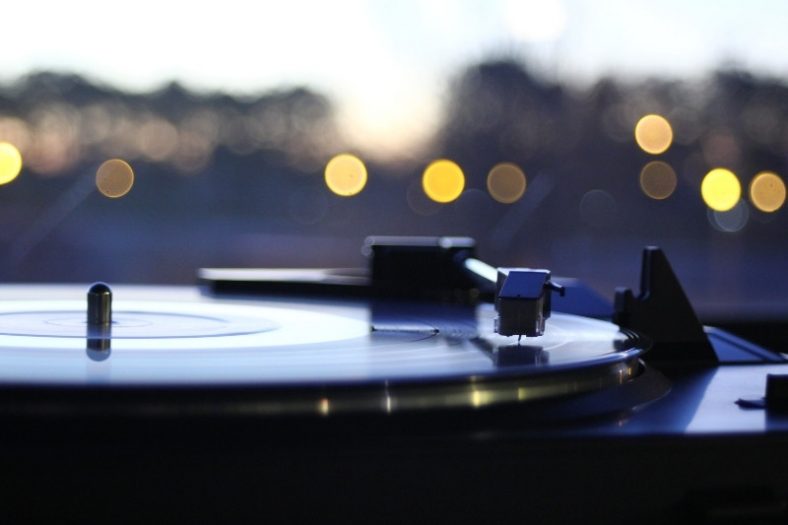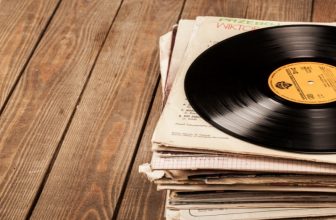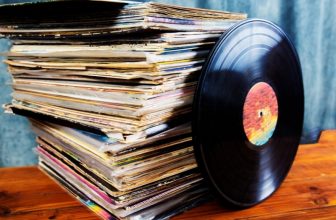How Do Vinyl Records Work? (Everything You Need to Know)

In short, the record player, or turntable, spins the vinyl record while the stylus on the record player reads and moves through the grooves imprinted on the vinyl record. This signal coming from the grooves is translated into electrical signals to be amplified before they travel to your ear.
Vinyl records have been making a comeback for years as many music enthusiasts prefer the warm old-school analog sound to the sounds of the digital world. The secret lies behind how vinyl records produce their amazing sound. So, today we examine how a song can be recorded on a flat surface and be played later.
Contents
A Short History Of Vinyl Records
Before vinyl records came into play, there were different inventions to record and reproduce sound. The first device was invented by Thomas Edison in 1877, which was a cylindrical device for phonographs to play. Some decades later, Emile Berliner came up with the phonograph record disc, which was the first step from music cylinders to records.
The flat discs of Emile Berliner called records featured spiral grooves all over the surface, starting from the edges and going until the center. However, these records were still very hard to mass produce. So, some adjustments needed to be made.
In the late 1940s, the first vinyl records were introduced. The material of vinyl records was different from the records of Berliner. But, the technology and the process were quite similar. That is why the term “record” remained the same, while the addition of “vinyl” hints the material was added to the name.
Vinyl records were easier to mass produce, and hundreds of vinyl records could be manufactured in a short time to be sold. This was the main advantage of vinyl records and was the reason why they became an industry standard for decades after.
The records were played with turntables called record players, which were the evolved versions of phonographs and gramophones. The main parts of the turntables were the cartridge system and the stylus. These parts read the grooves on the vinyl records, convert them to electric signals, and send them to the amp and speakers before they travel to our ears.
How Do Vinyl Records Work?
First, the turntable rotates the vinyl record, and the stylus reads the record grooves. Then the tonearm conducts this mechanical energy to the cartridge, and the cartridge converts the mechanical energy into electrical energy. Finally, the signal gets amplified and travels to the speakers.
There are 5 main steps of how vinyl records work. The rotation is highly important as it is how the stylus reads the grooves engraved on the vinyl record. The rotation is always at a constant speed, but there are different speed options as the diameter of the vinyl record determines how fast the rotation should be.
The traditional rotation speed is 33 1/3 revolutions per minute (RPM), as most long play records have a diameter of 12 inches. Single disc diameters are typically 10 inches, and they need a 45 RPM spin speed. Older single discs that were produced before the 1950s were maybe 7 inches long in diameter, which means that the rotation speed should be 78 RPM.
When the rotation starts, the tonearm gets lowered so the stylus can touch the rotating disk to read the grooves. This is either done by the user or done automatically if the turntable is a modern one. If it is manual, be sure to drop the tonearm softly on the vinyl record to prevent any damage.
In the video, you can see the aforementioned grooves with an electronic microscope.
The stylus reads the grooves, which are the fingerprints of the song, going up and down as the disc spins. The tonearm then acts as a part of the transducer system, which transfers the mechanical energy, the vibrations created by the stylus, to the cartridge to be converted into electrical energy.
In the cartridge, there is a magnet and electrical coils or a piezoelectric crystal to transform the vibrations into electrical energy. These signals then are sent to the amp to be amplified and travel to our ears through the speakers.
Do Vinyl Records Sound Better Than Modern Digital Records?
Many people believe that the sound of vinyl records is objectively better than digital music in the modern world. Record collectors and DJs say the sound is much warmer, and they prefer vinyl records actually due to the fact that it doesn’t sound perfect. However, it is scientifically proven that sound waves are replicated better with digital technologies.
The Whittaker Nyquist Kotelkinov Shannon Sampling Theorem explains that the replication of sound waves is almost perfect when a sampling rate is twice the frequency limit when using a band-limited signal.
This may sound complicated, but the bottom line is that digital technologies today can replicate the sound waves coming from the physical world much better with higher quality to store them for playing later. If you want to learn more about this, you can check the attached video and hear the comparison yourselves.
The reason behind the comeback of vinyl records is nostalgia. People tend to find that old-school sound warmer as it represents more than just sound quality or a specific song. Vinyl records represent the golden era of music, especially rock music.
Another reason is that it is less valuable if something is easier to achieve. Back in the 70s, collecting vinyl records to listen to different music was outstandingly valuable and enjoyable. You had to be patient, research, and find to listen to a new album or a specific song, which made it more fun and valuable.
Nowadays, you can just type the name of the song to a digital music platform, and you can listen to the song in seconds. So, this nostalgia towards the vinyl records is not just about the sound quality, but it is much deeper than that.
How Are Vinyl Records Recorded?
The process of recording a vinyl recording is exactly the opposite of the playback process. During the recording, a transducer such as a microphone receives the sound waves and converts them into electrical signals to be converted to vibrations to create the grooves on a vinyl record.
After the microphone receives the sound waves and translates them into electrical signals, the signals are transferred to an arm with a typically sapphire or diamond tip. This needle engraves the grooves to the vinyl recording according to the electrical signals it is receiving. So this way, the fingerprint of a song is transferred to the vinyl record from the electrical signals of a mic.
You can watch the attached video to learn more about vinyl record production techniques.
Tips For Good Playback Quality
As you may already know, vinyl records are highly sensitive and can get damaged easily. That is why the condition of a vinyl record heavily determines its value. There are some tips and tricks to preserve the vinyl records well in order to have the ideal sound quality during the playback.
To have a clean sound from a vinyl recording without any skips or undesired noises, you have to keep the vinyl records under optimal conditions and protect them against scratches and any kind of damage. Also, you have to clean the records regularly and properly.
Some tips and tricks to keep vinyl records in good condition are as follows:
- Keep the vinyl record in their sleeves: To prevent any kind of scratches and any accidental damage, you should always store your vinyl records in their sleeves. Only take them out for cleaning or playing.
- Clean the vinyl records regularly: Cleaning the vinyl records regularly and properly will significantly help them to stay in optimal conditions. You can use a soft brush or a carbon fiber brush for cleaning.
- Store vinyl records in cool and dry areas: Sunlight and heat sources are enemies to the vinyl records. You have to store them somewhere cool and dry. As vinyl is a plastic-type, heat can alter its shape damaging the grooves and leading to skips and unwanted noises like hisses.
- Use a sleeve liner: In order to prevent dust and paper fibers from remaining on the vinyl surface, you can use sleeve liners which are anti-static sleeves that are placed inside the original paper sleeve.
- Do not touch the record surface with grooves: One of the golden rules of the vinyl record world is that the handling should always be done by touching the outer rim and the label areas. Otherwise, touching the surface with grooves may cause accidental damage, such as scratches. Also, the skin oil may cause damage to the grooves.
If you want to learn more about the maintenance of vinyl records and vinyl record players, this video explains it all in a nutshell.
Conclusion
Well, this is everything you need to know about the function, production, maintenance, and history of vinyl records. While this information explains it well, nothing can explain that great feeling of listening to a vinyl record while seeing it magically spin on the turntable.
It does not matter if the sound quality was better back then or is better now with digital technology. Both worlds have their pros and cons, and there is no problem listening to them both whenever you like.





